#TNR (Trap-Neuter-Return)
Text
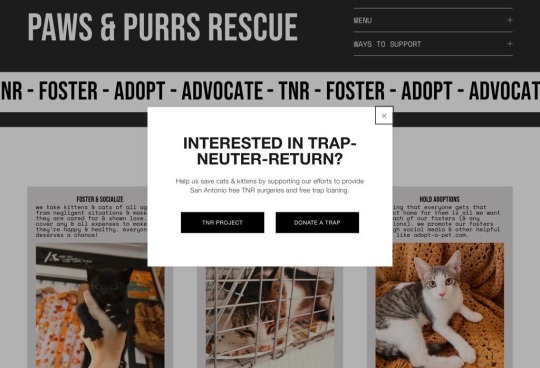
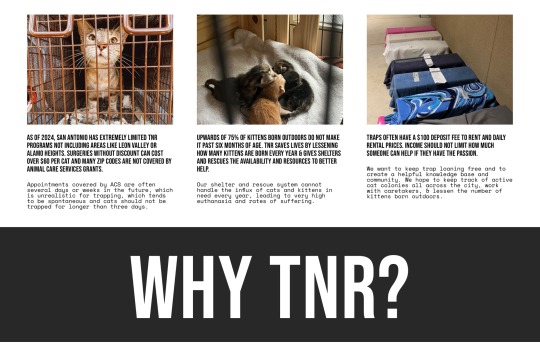
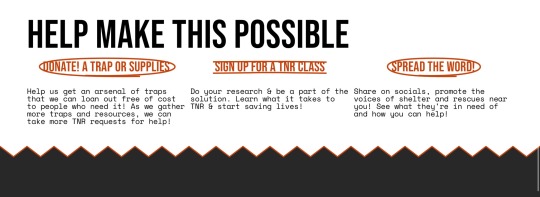
gave our rescue site a huge make over! :- ) along with finally finishing up our tnr area where people can learn everything they need!
9 notes
·
View notes
Text
Buy something lovely, help some sweet cats in need. XOXO
This is my friend Kim's ETSY store - the funds go to her amazing work taking care of both indoor and outdoor cats. She TNRs (Trap-Neuter-Return) community cats and fosters many as well. Check out her ETSY store and hopefully you'll purchase something to help her and the felines out. Thank you very much. ♥
Hey, friends!
▪️We specialize in vintage goods, found items, and unique digital downloads
▪️All purchases help support our #NoCatHungry outdoor buffet where we feed stray, feral, abandoned, TNR, and community cats.
▪️We thank you for visiting, buying, sharing our store page, and helping us fill those bellies. We couldn’t do it without you! ❤️, Kim
[SHOP HERE]
5 notes
·
View notes
Text
"Neuter Your Ex" – because some exes shouldn't pass on their genes! 🔪💔
For a $40 donation, claim your revenge and support our TNR (Trap Neuter Return) program Ouija’s Wishes by naming a feral cat. Let's ensure the only legacy they leave is a spayed or neutered cat! 🐾😼
To participate fill out this form:
https://forms.gle/FfByDHHRVTCpZJPM6
Cash App: https://cash.app/$FARSohio
Venmo: https://venmo.com/u/FurAngelsRescueShelter
(3914 ending number)
If you donate via Facebook take a screenshot of your donation and send it to us! We cannot see what everyone donates individually
Each feral cat will be fixed, ear-tipped, rabies vaccine, and an FVRCP vaccine!
TNR (Trap-Neuter-Release) is a very important program which helps to lower the population of stray and feral cats in our community. Your generosity ensures a feral cat’s well-being and a chance for a brighter future.
Every contribution counts! 🐾💜 #Ouijaswishes #trapneuterreturn #DonateForACause
This is strictly for fun, so nothing derogatory will be posted.
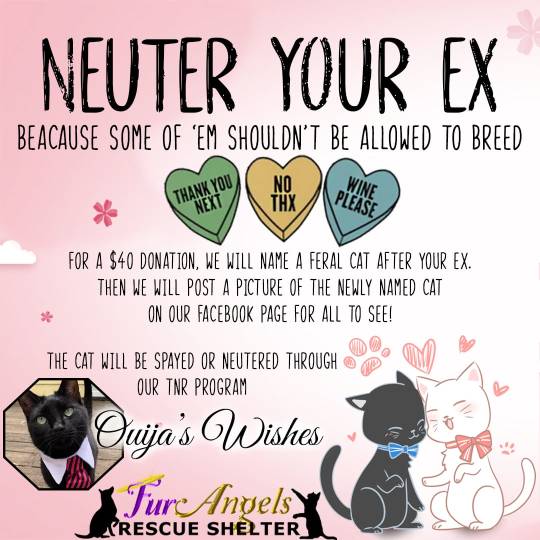
#fur angels rescue shelter#toledo#toledo ohio#adopt#cats#valentines day#spay and neuter#Neuter your ex#ex relationship#Ouijas wishes#donate#save a life#Trap neiter return#Tnr#pets#cute#ohio#fars#adoptdontshop#warrior cats
3 notes
·
View notes
Text
Tina was very frightened all day despite my attempts to keep her calm and reassured. She's on her way now to being spayed through the TNR process so it's all worth it. She'll also receive necessary vaccines that will protect her while outdoors! 🐾


2 notes
·
View notes
Text
Alley Cat Allies Helps Granite Shoals Adopt Lifesaving Trap-Neuter-Return Ordinance

This week, Granite Shoals, Texas, approved an update to its animal ordinance with heavy input from Alley Cat Allies that protects Trap-Neuter-Return (TNR) and community cats throughout the city. This victory is the result of months of our guidance and hard work with the Granite Shoals community, sparked by horrific comments about killing the city’s cats in late 2023.
Now the groundwork is laid for a strong TNR program, and the city is enthusiastic to get started. Alley Cat Allies will continue to offer our expertise and support for TNR and help Granite Shoals become a model for Texas communities.
In December 2023, audio from a meeting of the city’s Wildlife Advisory Committee revealed a disturbing discussion, with the former City Manager present, about “mass euthanasia” and shooting and poisoning of community cats.
The audio included these disturbing quotes: “Poison food, could you somehow round them up in a mass cage or something,” “I would be in favor of euthanizing and euthanizing as many as quickly as possible,” “The only authorized legal process for euthanizing is a 22 round in the back of the head. We have a location on this property that’s called Deer Heaven that I’m sure could be kitty cat Heaven, too…”
Alley Cat Allies immediately sent a letter to the Granite Shoals City Council condemning the comments and offering our support in establishing a TNR program. In doing so, we stood in solidarity with the Granite Shoals Police Department, the Hill Country Humane Society, and the people of Granite Shoals—all of whom shared our outrage.
We attended several Granite Shoals City Council meetings in the following months, helping the city shape the future of its approach to community cats. Alley Cat Allies provided extensive improvements to Granite Shoals’ animal control ordinance, all geared toward creating protections for community cats, legalizing TNR, and defending community cat caregivers.
This incredible step forward is a testament to the compassion the Granite Shoals community has for its cats and its commitment to positive, lifesaving programs that benefit cats and the city as a whole. Granite Shoals’ new ordinance can serve as a blueprint for surrounding communities, setting a standard for the humane treatment of community cats.
We’ll continue to work with Granite Shoals to get its TNR program running smoothly and keep our supporters updated.
Content source: https://www.alleycat.org/alley-cat-allies-helps-granite-shoals-adopts-lifesaving-trap-neuter-return-ordinance/
#Animal Welfare Organizations#Cat Traps#TNR Cats#TNR Programs#TNR Programs Near Me#Trap-Neuter-Return
0 notes
Text
I've been seeing a lot of Discourse around outdoor cats that talks past one of the biggest problems addressing community cats/outdoor working cats so I thought I'd chime in with my two cents.
Many arguments I see just... don't think about the cats at all? Or don't consider the logistics of actually addressing the feral cat problem in a humane way. It's always about how outdoor cats shouldn't be outdoors, which is neither realistic nor helpful.
I used to volunteer at an municipal animal shelter in the USA that had a TNR program (Trap, Neuter, Return) and also adopted out community cats to local farms and businesses. Here's my side of the story.
"Your cat doesn't need to be outside" -- Yes, correct. Your domesticated (non-feral) house cat does not need to go outside at all. They can have a fully actualized life safely indoors. When I see this argument, proponents of indoor only cats are correct in most or all their arguments regarding this.
"Outdoor cats are the largest invasive species in the world, and decimate bird populations." -- This is also correct, and part of the reason why you can help by bringing your house cat indoors. Cats are the largest invasive species. Spay and Neuter your cats, bring them inside, and socialize them so they don't become feral.
"TNR doesn't work." -- False. Whether we like it or not, feral cats exist. We have two methods by which we can address the feral cat population -- decimating them (humanely euthanizing the whole colony) or TNR. For a long time, euthanasia was the preferred way to address the feral cat problem. Afterall, if the cats aren't there, doesn't that save the local wildlife population?
Except that we found, studying these colonies, that when a colony is wiped out, the cats of another colony will spread into their territory and continue to have kittens and the population of feral cats is neither controlled nor diminished.
Hence, TNR. What we found performing TNR on cat colonies was that this controlled the population of the colonies, allowing them to stay in their territory, which kept other colonies from spreading (especially colonies we hadn't performed TNR on yet). We at the shelter felt this was the most humane way to control the feral cat population and safely deflate their existence without dealing with the population blooms that euthanasia caused.
"What about kittens?" -- Kittens from these colonies were brought into the shelter, socialized, and fostered out until they could be adopted. Some of these semi-feral kittens needed special homes to be adopted into, but this was the best quality of life for these cats.
"What about cats that get missed during TNR?" -- We would return to the colony several times over a period of several years to perform TNR on the same colony. We mark cats that have been neutered by clipping their ear (this is done humanely, but is the most reliable way to tell if a cat has been neutered so the poor thing doesn't have to have surgery 3-4 times in their life). Also, during the TNR process the cats would be vaccinated to ensure disease did not spread from the colony (i.e. rabies). Still, even getting 60% of the colony TNR'd would dramatically reduce the number of kittens being added to the colony each year. This controlled the population by allowing the territory to naturally deflate in size over time, buying us time to address the larger feral cat problem.
"What if the colony was in an unsafe location?" -- There were two ways we addressed unsafe colony locations -- remember, we know that when the colony is removed, a new colony will move into its place, so we tried not to move the colony unless we really felt the cats or the public was unsafe -- one was to move the whole colony to a new location. Preferably someplace like a warehouse where we have an agreement with the owners of the warehouse. Some of the cats were even relocated to shelter grounds as our community cats. If the colony was small enough we would bring them into our Feral Cats room and adopt them out as community cats.
"What is a community cat?" -- The way the program worked, was that anyone who needed a working cat could apply to the program. These were often rural farmers or businesses with warehouses that needed rodent protection. We trained the farmers and businesses on how to acclimatize the cats to their new home, and as part of the agreement, they had to care for the cats (veterinary care, vaccinations, food and water). This gave businesses and farms an alternative to expensive and environmentally unfriendly rodent control, and also gave these feral cats good places to live out their natural lives.
"Can't you just adopt out feral cats?" -- No. Cats that have not been socialized around humans as kittens, or who have several generations of feral cat in them could not interact with humans in a way that did not cause them undue stress. This was not a humane way to handle feral cats. However, when a cat was brought into the feral cat room, they would be monitored for up to a week. If the cat displayed signs of being semi-social or fully social (hanging out outside of their den, allowing staff to pet them, showing interest in staff in the room), then we would either move the cat into the adoption room or place them in foster to be socialized before adoption. Feral cats who displayed signs of being able to live full and healthy lives with human companions were NOT adopted out as community cats. We also observed this behavior during TNRs and would do the same for those cats too.
"But aren't cats bad hunters?" -- Compared to other species, cats are not the most effective form of rodent control. This is true. However, you have to understand that feral cats exist. There is no "undo" button we can push to stop them from existing. We have to deal with the problem we have right now, which is to safely and humanely decrease the number of feral cats in our communities. And yes, we do that by using cats as rodent control in the community.
"What can I do?" -- Stop saying community cats shouldn't exist. That's not helpful and doesn't solve the problem we have. Bring your cat indoors. Spay and neuter your cats. Adopt from shelters. Volunteer with a TNR team. Support TNR efforts in your community. Recognize that those of us actively dealing with the community/feral problem are trying to do what is in the best interest of our communities and the animals we love. We aren't sitting over here saying these cats should exist -- a feral cat will not have the same quality of life as one that is indoors with a family -- but we have to address the problem in practical terms. We don't have the moral high ground to just do nothing while pontificating solutions that have no basis in actuality.
And yes, it's okay to celebrate community cats. If your local farm has a couple of working cats, that means that farm is helping participate in the safe deflation of the feral cat population. Don't shame a farm or business for using community cats. We're all doing the best we can to solve the problem that we have.
6K notes
·
View notes
Text
Why Trap-Neuter-Return Feral Cats? The Case for TNR in Polk County
Why Trap-Neuter-Return Feral Cats? The Case for TNR in Polk County
Editorial
Sheriff Grady Judd refuses to listen to Science he just wants to kill them all. Polk County Commissioners are afraid of Judd.
Sheriff and Commissioners, it’s time to pull your head out of your asses and start a TNR program in Polk County.
It’s just common sense!!!!!
Do the Sheriff and the Commissioners have common sense!!!!
What is Trap-Neuter-Return (TNR)?
Trap-Neuter-Return is a…

View On WordPress
0 notes
Text


we're getting to work on organizing a huge tnr project here in san antonio to help provide free traps & surgeries to locals! income is a major factor in why people aren't able to act on cats and kittens they find around them & we really want to help be able to offer an option since there aren't a ton of low-cost options that don't involve high deposit fees for people looking to trap on their own.
we're trying to put together a good info-base for people on why tnr is so important & why you should do it!
we'd love to hear what questions you have about TNR or what keeps you from being able to get involved in your community! it's all about making this information & TNR more accessible, so any & all questions / info is welcome so we know what to tackle!
#pls ask away!!!!#tnr#trap neuter return#cat rescue#spay neuter#fostering saves lives#tnr saves lives#pawspurrsco
6 notes
·
View notes
Text
stav's feral cat fund!






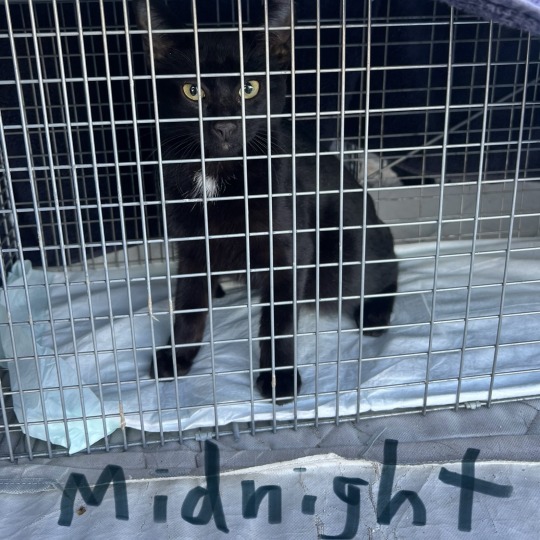

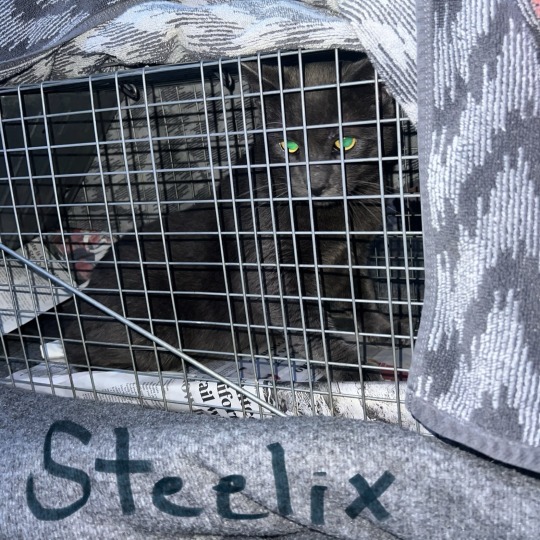
hello all! i would typically never ask for donations, but in this case it is not for me or my personal use. it's all for the kitties!
i do feral + community cat TNR (trap neuter return) in my city and although i've helped many cats (i even found two of them forever homes!), they just keep coming. thankfully the spay/neuter program i use does not currently charge a fee, but the supplies i need to care for these furballs is beyond what i can realistically afford. i'm also gearing up in preparation for kitten season, which is right around the corner. i have two humane traps, and a large dog kennel for recovery. i have to keep the cats for 24-72+ hours after surgery, and am currently in need of these supplies:
cat litter, for obvious reasons
extra large towels to cover the trap during transportation, and to cover the recovery kennel. having these enclosures covered reduces stress for the cats and helps protect them on cold nights
warm cat beds, to keep them warm and to have a safe place to hide inside the recovery kennel
feliway spray, a calming spray that works wonders for ferals! i just used up my last bottle
canned wet food. the cheap stuff comes in huge variety packs, cats prefer the taste, and the kitties just need the calories and moisture while they are recovering in my care.
if you would like to donate any of these items to the kitties in my area i have set up an amazon wishlist. this seems like the best option, since you know exactly what your donation is going towards. i tried to find the cheapest options available. if you would prefer to donate a different way, please let me know and we can discuss! i can take PayPal, Venmo, CashApp, and Zelle. and i would be more than happy to send you photos of the cats benefiting from your generosity if you would like! there are also other costs involved when the spay/neuter program finds issues once the cats are under anesthesia, such as worms or injuries and illnesses. i pay for those myself and would appreciate any help with that, but i'm more concerned with the basic necessities right now.
and if you are interested in helping the cats in your area, please google your city + TNR to find local programs! you can also reach out to me and i will answer any questions you have. cat populations are out of control, where i live in the US it is continuously heartbreaking just how many cats need our help. and in many places, like my city, the responsibility of care falls upon people like me doing it in their free time. let's help these often ignored and hidden kitties in need!
credit to @getawayfox for naming most of the cats in the photos above! ❤️
59 notes
·
View notes
Text
Stray is a game that stars an adorable orange cat, which has instantly helped make it a sensation. People absolutely love cats, and it’s a compelling game where the feline protagonist navigates through a dystopian environment in an attempt to return home. The story is melting the hearts of cat lovers and tugging on their heartstrings, and animal foster and rescue organizations have even been able to stream the game to get support for the kittens and cats in their care.
It’s kitten season, which begins in late spring and runs through October, and it means that organizations are dealing with a surplus of kittens and cats in need of help. Shelters and foster organizations often have to resort to unconventional forms of fundraising, like Facebook groups, online giveaways, or streams. Stray is an excellent game for the latter of these, because, well, it’s a game that understands cats. (There’s even a dedicated meow button, which is very important.)
It’s a very easy hook for viewers — you like the cat game? Well, we have cats right here. I’m always a fan of seeing little orange kittens on my feed, and Twitch streams of the game have become a good way to help drum up support for a worthy cause. Crits for Cats is one such organization, and it currently uses a Twitch channel and Twitter account to showcase rescue and foster cats and kittens. Crits for Cats advocates for rescue and TNR (which stands for trap-neuter-return.)
Fans who tune in to Crits for Cats’ Twitch streams get some good gameplay — the organization streams Stray but has featured a range of games in the past — as well as a live kittencam where viewers can watch the kittens play and redeem channel points for cat facts or to give the kittens treats.
614 notes
·
View notes
Text
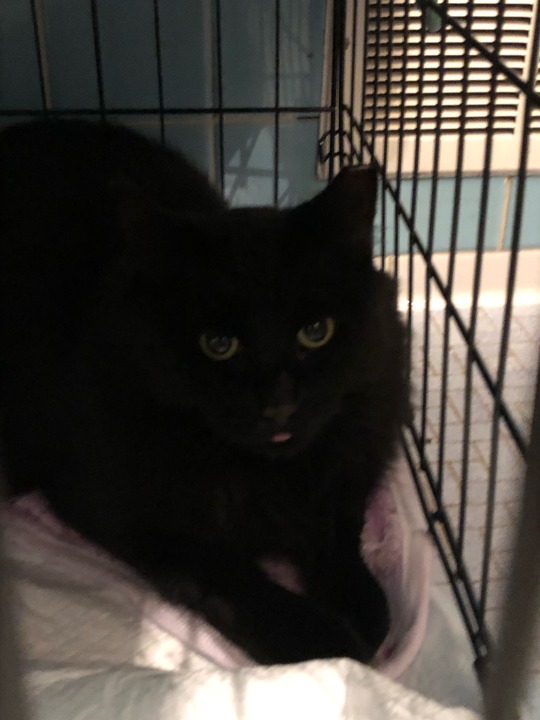
She got spayed and ear-tipped today.
1 note
·
View note
Text
TNRing cats is hard work but it is very fulfilling.
2 notes
·
View notes
Text
Alley Cat Allies Exposes Misrepresentation of TNR in The New Yorker
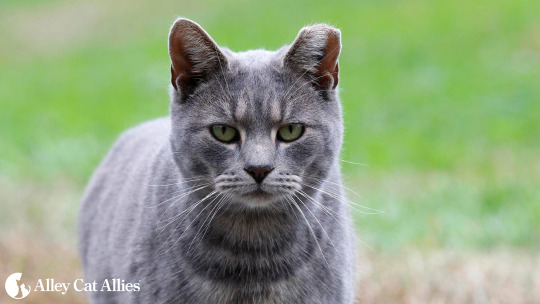
Alley Cat Allies is compelled to address the shockingly biased and dangerously misinformed portrayal of Trap-Neuter-Return (TNR), community cats, and the people who protect them in the piece ‘How the ‘No Kill” Movement Betrays Its Name’ published in The New Yorker.
The “article,” which should be labeled an opinion piece, uses debunked and antiquated studies to advocate for lethal control of cats outdoors, all while desperately downplaying the only humane and effective approach—Trap-Neuter-Return (TNR)—and condescending to or downright insulting the people who do the real legwork to benefit cats and communities.
Writer Jonathan Franzen purports various cynical, imagined reasons why our movement calls unowned cats who live outdoors “community cats.” We’re here to clear the air: Community cats, who live and thrive in their natural outdoor homes among us, are called such to acknowledge their thousands of years of history as members of our communities.
Community cats are bonded to their outdoor homes and to their feline families, and they are not generally candidates for adoption. TNR acknowledges their nature, their biology, and their inherent value as beings deserving of respect and protection by allowing these cats to continue their lives in familiar surroundings while ensuring their population stabilizes.
TNR is the ONLY evidence-based, humane, and effective approach to cats outdoors. Spaying or neutering means fewer kittens born outdoors and the reduction of behaviors associated with mating—which are what people point to as “nuisance” behaviors. Additionally, vaccinations provided during TNR improve the cats’ health and address community health concerns—though it’s critical to note that cats are extremely unlikely to spread rabies, toxoplasmosis, or any other diseases. The success of community TNR programs is studied and documented.
TNR is also the primary way community cats with other medical issues receive the care they need— despite Franzen hammering in the idea that all cats are suffering outdoors (there’s a sinister motive for this, as we’ll describe later), community cats are generally healthy and in good condition and live long and fulfilling lives as pet cats.
Developing objective, science-first best practices aimed at humane care for animals, building peaceful communities, and protecting all species should be the top priority in our modern world. That is why Trap-Neuter-Return (TNR) has become mainstream practice. Beyond saving cats’ lives, TNR is sound public policy that reduces calls to animal control, reduces the number of cats entering shelters, and reduces taxpayer expense, all while meeting the demands of the public for effective, meaningful, AND lifesaving action for cats in their communities.
Franzen writes about TNR as under-resourced in far too many communities. The logical solution would be for local governments to devote more resources to TNR to improve its reach and efficacy rather than continue to waste money on ineffective lethal schemes. Franzen’s conclusion, though, is that lack of resources means TNR will never work. He believes cats should be killed—and his portrayal of cats as constantly suffering outdoors is meant to justify lethal schemes.
TNR opponents’ proposed “alternatives” to TNR come down to rounding up and killing cats over and over and over again. However, trapping cats and “euthanizing” them in shelters is not some untested idea; it was the status quo for decades and failed miserably due to the Vacuum Effect—a phenomenon in which other cats move in to take advantage of the resources that sustained the colony that was removed. In fact, TNR rose from a history of futile, cruel catch-and-kill cycles because communities recognized the need for change and that compassionate and humane approaches worked.
Franzen, like many in the anti-TNR crowd, cites the same piece of debunked junk “science” that keeps coming back to haunt us within so-called “factual” articles. That “science” is an exercise in Olympic gymnast-level contortion to fit the findings of older studies into a pre-determined conclusion that cats are a major threat to birds and other wildlife species.
Cats have an important place in ecosystems, and whenever they are removed in large numbers, the consequences are dire—not just for the cats but for local wildlife. The reality is cats are not a major threat to wildlife species, endangered or otherwise, and the “science” that claims such is heavily flawed and funded by fringe interests and biased parties. As we have seen time and time again, catch and kill leads to nothing but an endless cycle of expensive and morally bankrupt slaughter that does not benefit cats, community, or wildlife.
But, on a positive note, the reality is also that we can protect both cats and wildlife. The interests are not mutually exclusive. By advocating for stronger TNR programs backed by local governments AND policies that curb human-led activities that are the true threats to wildlife—like habitat destruction and pollution—we improve the lives of cats, wildlife, and us all.
Like all worthwhile goals, communitywide effort is the key to humane and effective programs and policies. Rather than condescending and stereotyping cat caregivers, as Franzen does repeatedly in his article, Alley Cat Allies supports them with humane education on best practices for TNR and community cat care. Rather than give community leaders an excuse to give up on humane programs and utilize taxpayer dollars on an endless cycle of killing cats, we push them to work WITH members of their communities and allot funds to what their people believe in—which overwhelmingly is non-lethal approaches.
It’s time for communities, local governments, and media outlets like The New Yorker to stop wasting words, space, money, and time on calls to backtrack to the dark ages of killing cats and kittens endlessly. TNR is the only way forward.
Content source: https://www.alleycat.org/alley-cat-allies-exposes-misrepresentation-of-tnr-in-the-new-yorker/
#Trap-Neuter-Return#TNR Misrepresentation#The New Yorker Article#Cat Care Insights#Cat Rescue Awareness
0 notes
Text
to throw my two cents out there:
what happened to Frostpaw as of Thunder should not and never be compared to forced sterilization
forced sterilization is a racist and ableist practice used to 'cull out imperfection' and was used primarily against people of color and those with disabilities, to put it in the bluntest term I can
and even then, there's more horror to the truth of forced sterilization
however, Frostpaw being tnr [trapped, neutered, returned] is not that and it people are doing more harm than good comparing it
it feels like it's the same people comparing Tigerheartstar's taking over of RiverClan to cultural genocide and it's all giving me the worst headache when I see people talk about it
#warriors#warrior cats#it is literally the tnr program#i know warriors has a lot of racism issues#this is not one of them
23 notes
·
View notes
Note
Hi Skippy! We have a new stray kitty. She showed up a couple months ago and is afraid of us. So, I did the TNR (trap, neuter, return) and got her fixed. I wish I could pet her, but she happily plays with the other outside cats. Her name is Haley. She is now cat #14.

She is lovely! Thank you for sharing her with us…❤️
14 notes
·
View notes
Note
Not a warriors fan but I think it would be funny if one of the big threats or whatever in a book was that a TNR* program was going on locally
*Trap Neuter Return, in which humans catch cats and neuter them and then release them back into the wild
/ᐠ。ꞈ。ᐟ\
14 notes
·
View notes